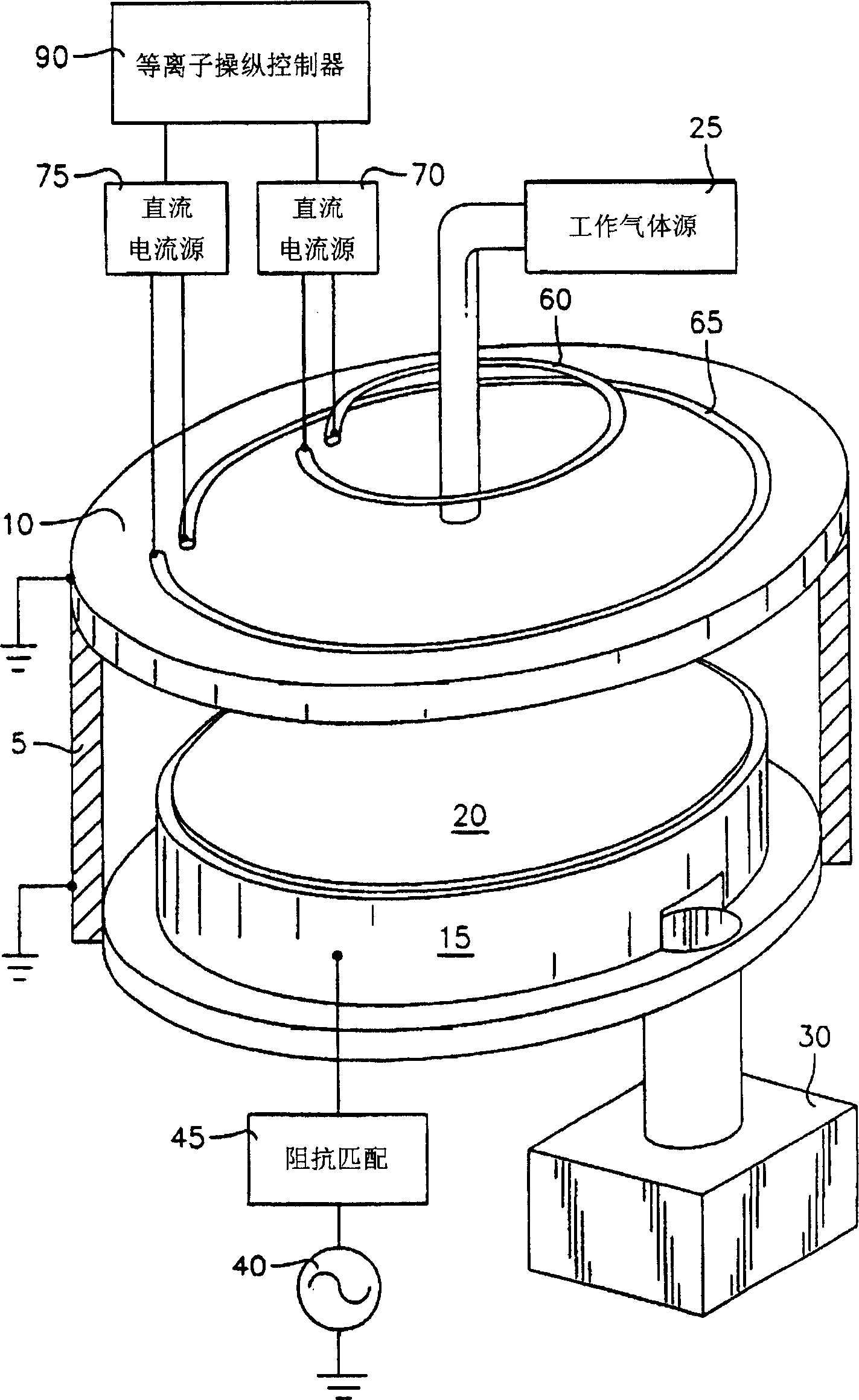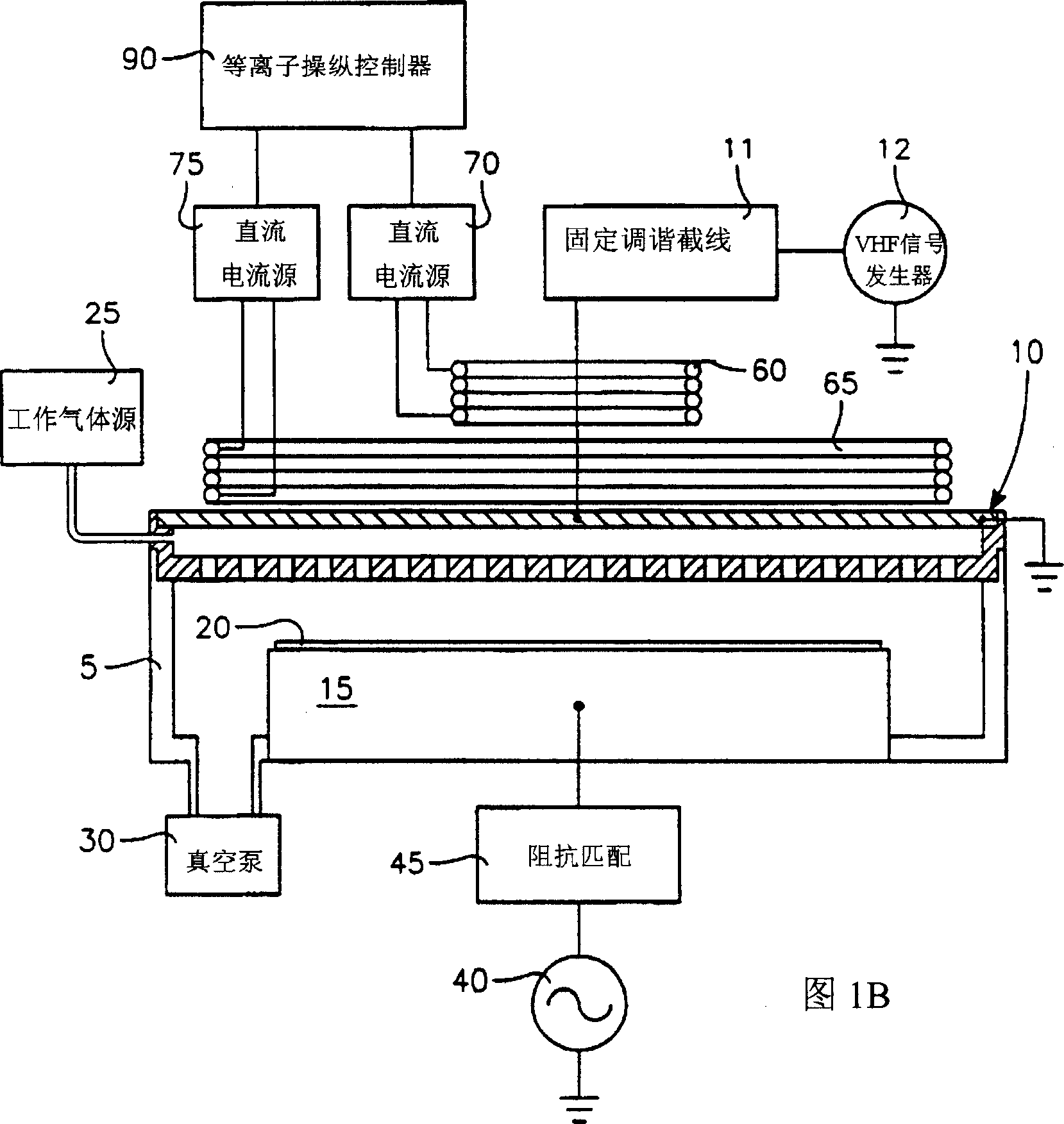Capacitively coupled plasma reactor with magnetic plasma control
A plasma and reactor technology, which is applied in plasma, ion beam tube, semiconductor/solid-state device manufacturing, etc., can solve problems such as magnetic field strength limitation, reaction chamber or wafer arc discharge problems, etc.
- Summary
- Abstract
- Description
- Claims
- Application Information
AI Technical Summary
Problems solved by technology
Method used
Image
Examples
Embodiment Construction
[0046] The plasma ion density distribution exhibited by a given plasma chamber is a function of chamber pressure, gas mixing and diffusion, and source power emission pattern. In the present invention, this distribution is magnetically altered to approximate a predetermined selected or desired distribution to improve process uniformity. The magnetically altered or corrected plasma ion density distribution can improve process uniformity across the wafer or workpiece surface. For this purpose, the magnetically corrected plasma distribution can be non-uniform or also uniform, depending on the needs determined by the user. We have found that by applying pressure to the plasma, the efficiency with which the distribution of the average magnetic field strength is changed to the desired distribution can be effectively improved. Surprising results can be obtained in accordance with this discovery by increasing the radial component of the magnetic field gradient. The radial direction i...
PUM
 Login to View More
Login to View More Abstract
Description
Claims
Application Information
 Login to View More
Login to View More - R&D
- Intellectual Property
- Life Sciences
- Materials
- Tech Scout
- Unparalleled Data Quality
- Higher Quality Content
- 60% Fewer Hallucinations
Browse by: Latest US Patents, China's latest patents, Technical Efficacy Thesaurus, Application Domain, Technology Topic, Popular Technical Reports.
© 2025 PatSnap. All rights reserved.Legal|Privacy policy|Modern Slavery Act Transparency Statement|Sitemap|About US| Contact US: help@patsnap.com



